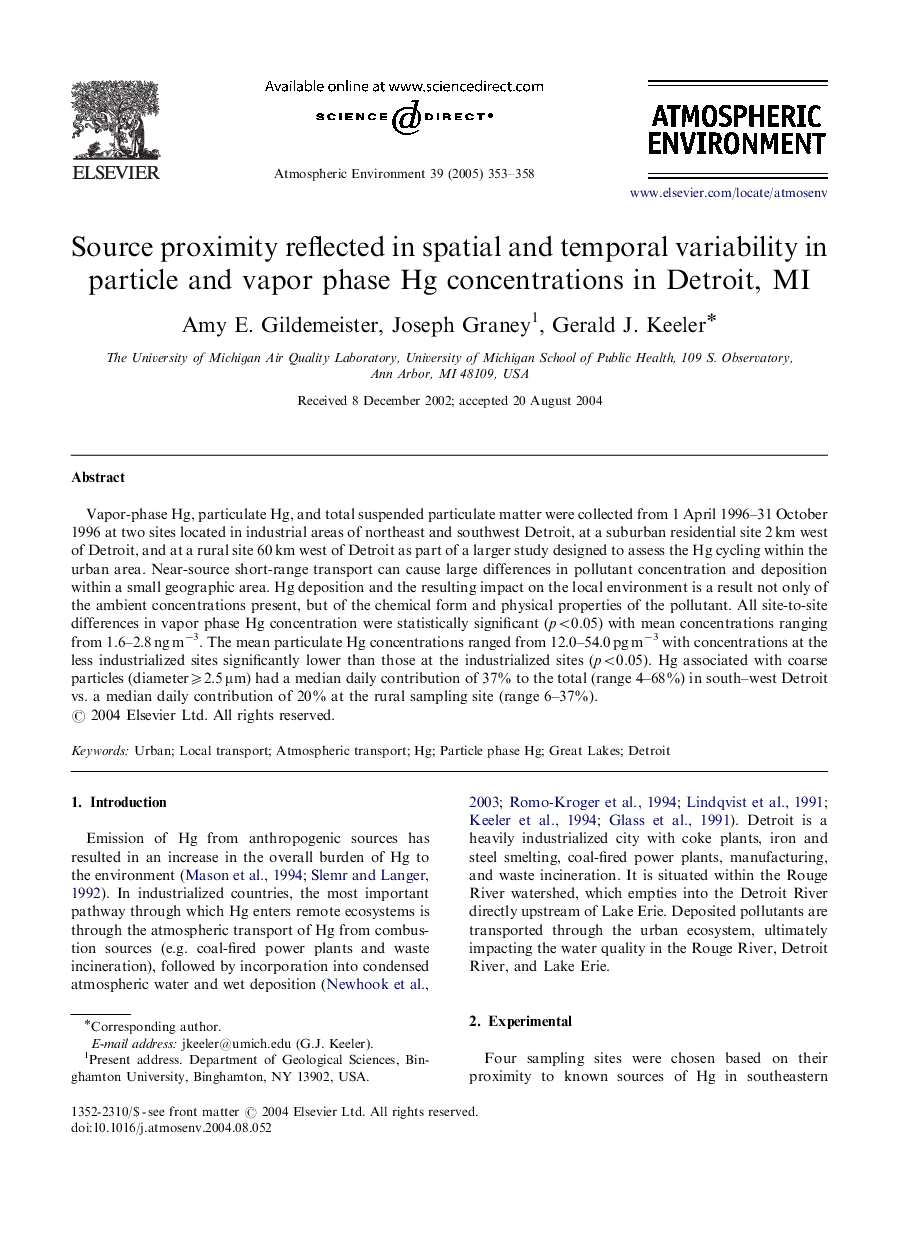| Article ID | Journal | Published Year | Pages | File Type |
|---|---|---|---|---|
| 9458869 | Atmospheric Environment | 2005 | 6 Pages |
Abstract
Vapor-phase Hg, particulate Hg, and total suspended particulate matter were collected from 1 April 1996-31 October 1996 at two sites located in industrial areas of northeast and southwest Detroit, at a suburban residential site 2 km west of Detroit, and at a rural site 60 km west of Detroit as part of a larger study designed to assess the Hg cycling within the urban area. Near-source short-range transport can cause large differences in pollutant concentration and deposition within a small geographic area. Hg deposition and the resulting impact on the local environment is a result not only of the ambient concentrations present, but of the chemical form and physical properties of the pollutant. All site-to-site differences in vapor phase Hg concentration were statistically significant (p<0.05) with mean concentrations ranging from 1.6-2.8 ng mâ3. The mean particulate Hg concentrations ranged from 12.0-54.0 pg mâ3 with concentrations at the less industrialized sites significantly lower than those at the industrialized sites (p<0.05). Hg associated with coarse particles (diameter⩾2.5 μm) had a median daily contribution of 37% to the total (range 4-68%) in south-west Detroit vs. a median daily contribution of 20% at the rural sampling site (range 6-37%).
Related Topics
Physical Sciences and Engineering
Earth and Planetary Sciences
Atmospheric Science
Authors
Amy E. Gildemeister, Joseph Graney, Gerald J. Keeler,
